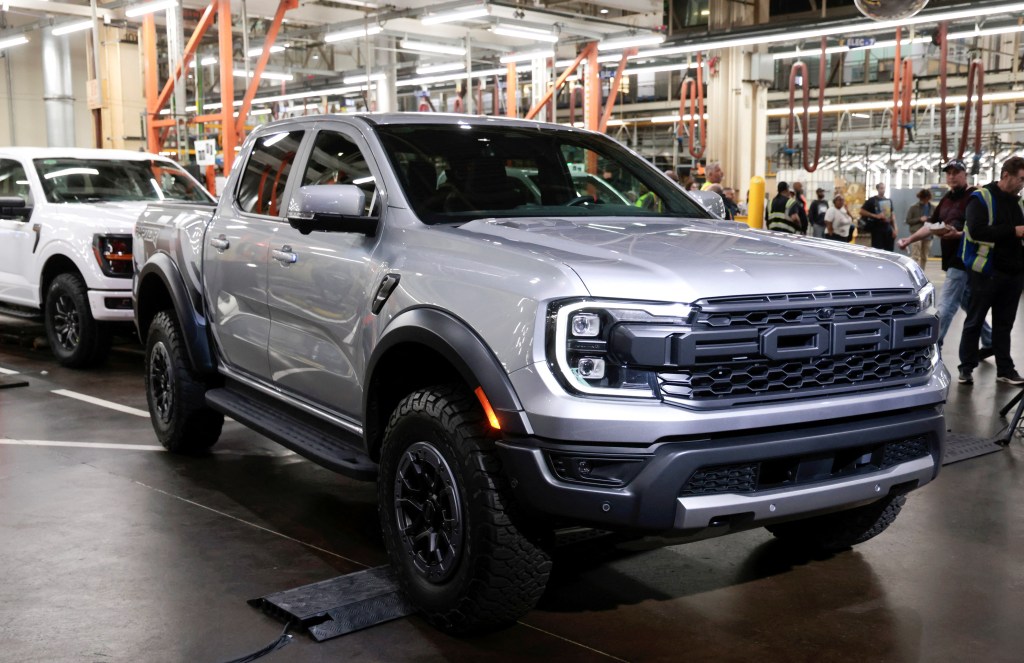Tens of billions of dollars in subsidies for electric vehicles. Billions more coming to subsidize charging stations. Non-stop jibberjabber about “sustainable” this and “Green New Deal” that.
Endless moral preening from the likes of Alexandria Ocasio-Cortez. Overbearing corporate arm-twisting.
And the bestselling vehicle in the United States in 2023 was the Ford F-150 pickup. No. 2 was the Chevy Silverado pickup. No. 3? Ram pickup.
Perhaps you are seeing a trend.
So there’s gold, silver, bronze . . . whatever you get for fourth place . . . and then you come to Elon Musk & Co.
His Tesla’s Model Y came in a respectable No. 5, right between the Toyota RAV-4 and the Honda CRV, two small SUVs beloved by people who cannot afford bigger ones.
Thanks to Uncle Sugar, the Model Y’s sales were goosed a bit in 2023 by the return of a $7,500 federal handout and state and local giveaways such as the Bay Area’s Clean Cars 4 All program, which will put up to $9,500 in your pocket if you swap an older gasoline or diesel vehicle for an electric one.
That’s a lot of money — and a lot of market-distorting economic intervention — to push a $50,000 status symbol for affluent urbanites into fifth place.
Juicing the markets is expensive — and it works only up to a point.
Consumer demand for EVs is running on empty as drivers embrace the best-of-both-worlds model of plug-in hybrids, sales of which have surged 40% over the past five years.
The pure EV is not a mere passing fad, but Elon Musk’s heel-turn on social media has certainly made the Tesla brand less fashionable than it once was, leading to the announcement this week that the car-maker is slashing 10% of its workforce.
Pure EVs overall are a niche product in the United States and are likely to remain so. But the bear market for electric cars is not the only recent reversal of environmental utopianism— nor is it the most important one.
While the likes of Rep. Ocasio-Cortez dream of powering the modern industrial economy with sunshine and gaseous beef byproducts, the Tokyo Electric Power Company is preparing to fuel up and restart Kashiwazaki-Kariwa, the world’s largest nuclear-power plant.
The Japanese government — in tandem with the Biden administration — recently announced a plan to try to speed up the commercialization and deployment of fusion-based nuclear power, and a joint statement issued by the White House after the state visit of the Japanese prime minister affirmed the “indispensable” role of nuclear power.
That sound you’re hearing is the death rattle of one of the most destructive utopian campaigns of the 1970s — the left-wing push to abandon clean, plentiful nuclear power as though that would liberate the world from the threat of nuclear weapons.
Japan is working to bring its idled nuclear power back online in a “nuclear renaissance.” Why? It is worth remembering that Tokyo is closer to Pyongyang than it is to Beijing — and closer to Vladivostok than it is to either.
The lessons of Vladimir Putin’s punitive energy war against Ukraine’s allies in Europe has not been lost on Japan. Neither have Chinese saber-rattling and periodic outbreaks of political psychosis in North Korea.
Speaking last week at a conference in Brussels, Maroš Šefcovic , the executive vice president of the European Commission who leads the “European Green Deal” project, said that EU countries need to build two new commercial nuclear reactors every year for the next 15 years to achieve the European Union’s economic and climate goals.
Gone are the days when apparently serious people argued that putting solar panels on our roofs, upgrading our windows, and adding an extra recycling bin was the way to address climate change.
Whether it is electric cars or addressing greenhouse-gas emissions, the environmental movement has always pitted romantics, utopians, central planners and anti-capitalists against . . . well, against a lot of things, from physics and economics to global supply chains and consumer demand.
There has always been a certain kind of sandal-wearing environmentalist unable to make his peace with the guys in the wingtip shoes and work boots who perform the actual labor of providing the goods and services — food, energy, pharmaceuticals, transportation — that make our 21st-century standard of living possible. This is in part because they reject that 21st-century standard of living as immoral.
The quasi-religious aspect of the environmental movement, which you’ll get to see plenty of on Earth Day tomorrow, has always been at war with the practical solutions rooted in economics and engineering.
Consider: For all those billions spent subsidizing progressive suburban dentists shopping for a new Tesla, the great advance in US greenhouse-gas emissions has come from old-fashioned fossil fuels as relatively low-emissions natural gas has displaced relatively high-emissions coal in many electricity plants, a development driven mostly by old-fashioned market economics.
The growth of natural gas at the expense of coal is not the kind of story that the sandal-wearing types are excited to hear, because it doesn’t offer any moral frisson. It just works.
As William F. Buckley Jr. once put it: “Idealism is fine. But, as one approaches reality, the costs become prohibitive.”










